The Power and the Glory est un film américain de genre Drame réalisé par William K. Howard avec Spencer Tracy
The Power and the Glory (1933)
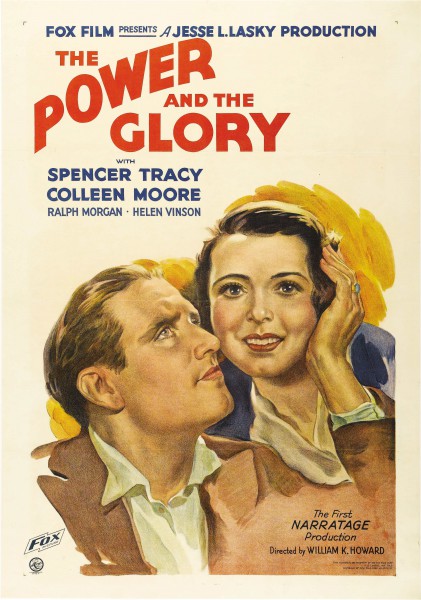
Si vous aimez ce film, faites-le savoir !
- Infos
- Casting
- Infos techniques
- Photos
- Vidéos
- Passages TV
- Citations
- Personnages
- Musique
- Récompenses
The Power and the Glory is a 1933 Pre-Code film starring Spencer Tracy and Colleen Moore, written by Preston Sturges, and directed by William K. Howard. The picture's screenplay was Sturges' first script, which he delivered complete in the form of a finished shooting script, for which he received $17,500 and a percentage of the profits. Profit-sharing arrangements, now a common practice in Hollywood, were then unusual and gained Sturges much attention.
The film, told through flashbacks, was cited by Pauline Kael in her essay "Raising Kane", as a prototype for Citizen Kane. (Screenwriter Herman J. Mankiewicz, who along with Orson Welles won an Oscar for the screenplay of Citizen Kane, was a friend of Sturges.) Tracy's powerful performance in a boardroom scene remains widely considered one of his most thrilling sequences as an actor.
The film was loosely based by Sturges on the life of C. W. Post, his second wife's grandfather, who founded the Postum Cereal Company, which later became General Foods. Like Tom Garner, the lead character in The Power and the Glory, Post worked his way up from the bottom, and ended his own life. Otherwise, according to Sturges, their lives did not correspond.
In 2014, The Power and the Glory was deemed "culturally, historically, or aesthetically significant" by the Library of Congress and selected for preservation in the National Film Registry.
The film is unrelated to the 1940 novel of the same title by Graham Greene.
Synopsis
After the funeral service for Tom Garner (Spencer Tracy), a powerful and much-hated railroad tycoon who committed suicide, his best friend Henry (Ralph Morgan) recalls Garner's life, his family problems, and his rise from track walker to president of the railroad.Acteurs

Spencer Tracy
(Tom Garner)
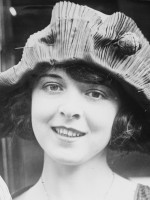
Colleen Moore
(Sally Garner)
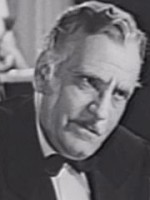
Ralph Morgan
(Henry)

Helen Vinson
(Eve Borden)

Henry Kolker
(Mr. Borden)
Commentaires
Postez un commentaire :
Suggestions de films similaires à The Power and the Glory
Il y a 233 films ayant les mêmes acteurs, 39 films avec le même réalisateur, 61789 ayant les mêmes genres cinématographiques, 368 films qui ont les mêmes thèmes, pour avoir au final 70 suggestions de films similaires.Si vous avez aimé The Power and the Glory, vous aimerez sûrement les films similaires suivants :

Klondike Fury (1942)
Réalisé par William K. Howard
Origine Etats-Unis
Genres Drame
Acteurs Edmund Lowe, Lucile Fairbanks, William Henry, Ralph Morgan, Robert Middlemass, Jean Brooks
Note45%





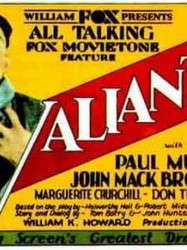
Je suis un assassin (1929)
, 1h6Réalisé par William K. Howard
Origine Etats-Unis
Genres Drame
Thèmes Théâtre, Adaptation d'une pièce de théâtre
Acteurs Paul Muni, John Mack Brown, Marguerite Churchill, DeWitt Jennings, Henry Kolker, Edith Yorke
Note59%





A man condemned to execution (Muni) tries to convince two women (Yorke and Churchill) and that he is not their son and brother, and that they must get on with their lives.

Play (2011)
, 1h58Réalisé par Ruben Östlund
Origine France
Genres Drame, Policier
Thèmes L'adolescence, Alcoolisme, Le thème de l'éducation, L'enfance, L'immigration, Le racisme, Le suicide, La précarité, L'enfance marginalisée, Harcèlement à l'école
Acteurs John Ortiz
Note70%





À Göteborg, trois jeunes garçons, deux Suédois et un immigré cambodgien bien intégré, se retrouvent dans un centre commercial. Ils sont repérés par une petite bande d'adolescents d'origine africaine, apparemment organisée pour le racket, qui élaborent un plan complexe pour les dépouiller en douceur.

Poulet aux Prunes (2011)
, 1h31Réalisé par Marjane Satrapi, Vincent Paronnaud
Origine France
Genres Drame, Comédie, Comédie dramatique, Romance
Thèmes La musique, Le suicide, Violon
Acteurs Mathieu Amalric, Édouard Baer, Maria de Medeiros, Golshifteh Farahani, Éric Caravaca, Jamel Debbouze
Note69%





L'histoire se passe à Téhéran en 1958. Depuis que son violon tant aimé a été brisé, Nasser Ali Khan, un des plus célèbres musiciens de son époque, a perdu le goût de vivre. Ne trouvant aucun instrument digne de le remplacer, il décide de se mettre au lit et d'attendre la mort. En espérant qu'elle vienne, il s'enfonce dans de profondes rêveries aussi mélancoliques que joyeuses, qui, tout à la fois, le ramènent à sa jeunesse, le conduisent à parler à Azraël, l'ange de la mort, et nous révèlent l'avenir de ses enfants... Au fur et à mesure que s'assemblent les pièces de ce puzzle, apparaît le secret bouleversant de sa vie : une magnifique histoire d'amour qui a nourri son génie et sa musique.

Présumé coupable (2011)
, 1h42Réalisé par Vincent Garenq
Origine France
Genres Drame, Policier
Thèmes L'enfance, La prison, Sexualité, Le suicide, La pédophilie, La peine de mort
Acteurs Philippe Torreton, Noémie Lvovsky, Vladimir Yordanoff, Raphaël Ferret, Michelle Goddet, Olivier Claverie
Note72%





Le film raconte l'histoire d'Alain Marécaux, un des accusés de l'affaire d'Outreau.

Soldat Roméo (2011)
, 1h38Réalisé par Alan Brown
Origine Etats-Unis
Genres Drame, Romance
Thèmes Sexualité, Le suicide, Théâtre, Homosexualité, Roméo et Juliette, Adaptation d'une pièce de théâtre, Adaptation d'une pièce de théâtre de William Shakespeare, LGBT, LGBT
Acteurs Hale Appleman, Charlie Barnett, Seth Numrich, Barry Adamson, Matt Doyle, Charlie Barnett
Note59%





Huit jeunes cadets se retrouvent seuls dans un établissement militaire américain et lisent Roméo et Juliette de Shakespeare en cours. En dehors de la classe, ils vivent ce drame : un couple (de garçons) se forme, certains de leurs amis se détournent d'eux, deux clans opposés se forment… Les paroles sont celles de la pièce de Shakespeare.
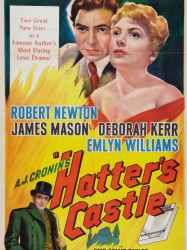
Le Chapelier et son château (1942)
, 1h42Réalisé par Lance Comfort
Origine Royaume-uni
Genres Drame
Thèmes La famille, Le suicide
Acteurs Robert Newton, Deborah Kerr, James Mason, Emlyn Williams, Henry Oscar, Enid Stamp Taylor
Note69%





 , 1h58
, 1h58Réalisé par Waris Hussein
Origine Etats-Unis
Genres Drame
Thèmes Le suicide
Acteurs Zach Galligan, Molly Ringwald, Ellen Burstyn, Len Cariou, Marsha Mason, Paul Sorvino
Note73%





Rick (Zach Galligan) is the apple of his father's eye; smart, handsome, and idolized by his younger siblings (River Phoenix and Heather O'Rourke). By stark contrast, Lonnie (Molly Ringwald) is a troubled and withdrawn girl, struggling to put the painful memory of a failed suicide attempt behind her. Both teenagers are dealing with loneliness and family pressures when they begin to find solace in each other, and a young romance develops. As Rick and Lonnie's bond begins to grow stronger, and they become increasingly withdrawn from their friends and families, their protective parents begin to worry that the young lovers are becoming too involved and grow increasingly uncomfortable with the teenagers' relationship. Finally, when Rick's parents (Ellen Burstyn and Len Cariou) decide that Lonnie is a bad influence on their son, and Lonnie's parents (Marsha Mason and Paul Sorvino) decide that boarding school would be the best place for their troubled daughter, Rick and Lonnie, desperate not to be separated, make a tragic decision to take their own lives. In the wake of the young lovers' fatal suicide pact, the two devastated families are left to try and pick up the pieces of their shattered lives and must somehow find a way to go on.

Le Chat (1971)
, 1h26Réalisé par Pierre Granier-Deferre, Dominik Graf
Origine France
Genres Drame
Thèmes Mise en scène d'un animal, La banlieue française, Le suicide, Vieillesse, Mise en scène d'un chat, Mise en scène d'un mammifère
Acteurs Jean Gabin, Simone Signoret, Annie Cordy, Harry-Max, Jacques Rispal, Nicole Desailly
Note74%





Un couple de retraités, les Bouin, habite en banlieue parisienne (à Courbevoie) dans les années 1970, en plein bouleversement du fait des travaux d'urbanisme moderne d'alors. Julien Bouin est un ancien ouvrier typographe ; sa femme, Clémence Bouin, est une ancienne trapéziste de cirque dont la carrière s'est terminée trop tôt en raison d'une chute lors d'un spectacle. Ils n'ont jamais eu d'enfants.

La Fièvre dans le sang (1961)
, 2h4Réalisé par Elia Kazan, Ulu Grosbard
Origine Etats-Unis
Genres Drame, Drame romantique, Romance
Thèmes Maladie, Le suicide, Folie, Hôpital psychiatrique
Acteurs Natalie Wood, Warren Beatty, Pat Hingle, Audrey Christie, Joanna Roos, Gary Lockwood
Note76%





Une petite ville du Kansas, en 1928. Deux jeunes gens, Deanie (Natalie Wood) et Bud (Warren Beatty), sont amoureux l'un de l'autre. Ils sont confrontés à deux obstacles : Ace (Pat Hingle), le père de Bud, riche homme d'affaires, a d'ambitieux projets pour son fils, — l'envoyer étudier à la prestigieuse université Yale, alors que celui-ci voudrait simplement faire une école d'agriculture pour reprendre le ranch de son père et surtout épouser Deanie sans tarder. Deanie, issue d'une famille de classe moyenne, se voit contrainte, surtout par sa mère, de respecter la morale conservatrice dominante et de ne faire aucun écart de conduite avant le mariage.
 Connexion
Connexion